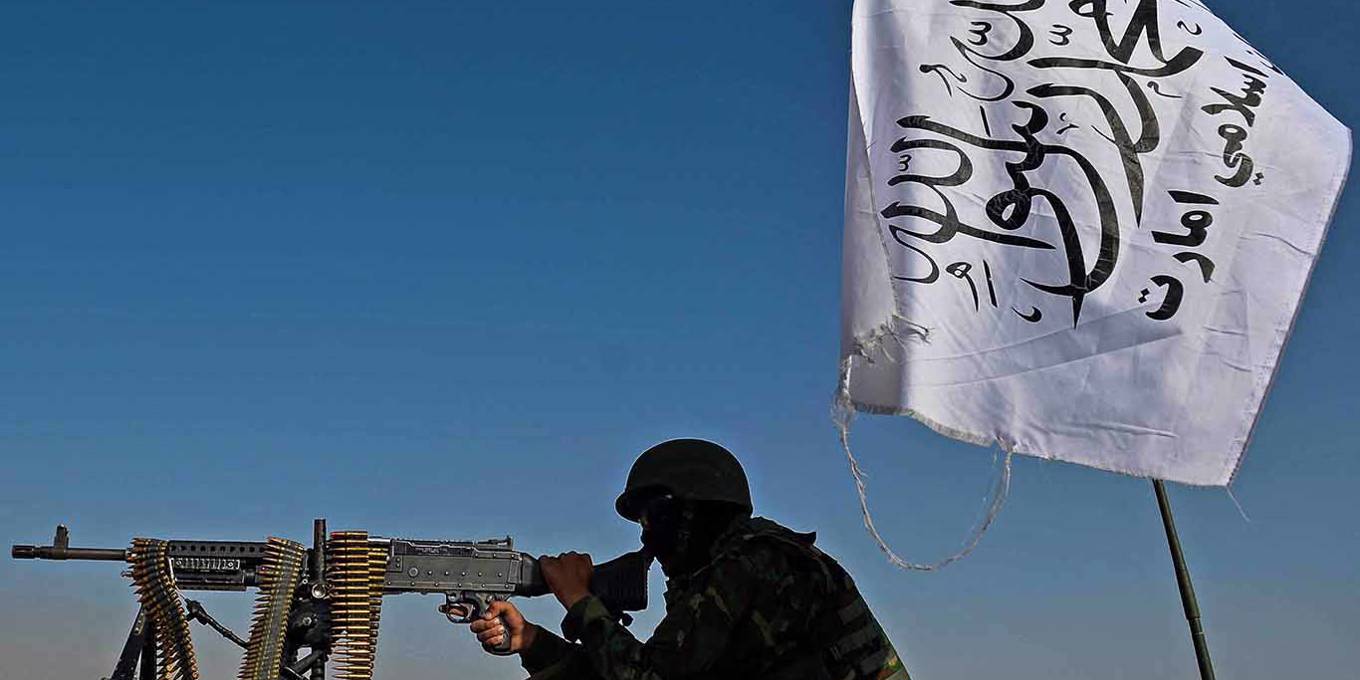[ad_1]
The Taliban’s victory over the United States in Afghanistan will not only make its jihadist colleagues strong, it will also shake the geopolitics of the region. In particular, an Afghanistan-Pakistan-China axis with political coordination would pose a great risk to India.
NEW DELHI – In the weeks since the theocratic terrorists of the Taliban came to power in Kabul, the people of Afghanistan, especially their women and girls, have been exposed to unimaginable suffering while the world’s attention has focused on other issues. But many other countries, especially India, have cause for concern.
The Taliban’s victory after 20 years of unsuccessful American-led nation-building efforts in Afghanistan will not only be very encouraging to its jihadist counterparts, it will also shake the geopolitics of the region. To demonstrate the destabilizing effects of the Kabul fall, just look at the reactions of Afghanistan’s neighbors.
Pakistan’s Prime Minister Imran Khan’s response – particularly his statement that the return of the Taliban to power was tantamount to removing the “shackles of slavery” – underscores what was already known: Afghanistan, ruled by the Taliban, will be a creature of Pakistan. When the Taliban ruled the country from 1996 to 2001, their “Islamic Emirate” functioned as a wholly-owned subsidiary of the Pakistani secret service Inter-Services. This time around, Pakistan’s control is said to be a little less absolute, but that didn’t prevent ISI chief Faiz Hameed from traveling to Kabul shortly after his overthrow to triumphantly preside over the formation of the new Taliban government.
Less openly, but arguably more important, China has worked to make the most of a delicate situation. The Chinese have invested $ 62 billion in the China-Pakistan Economic Corridor (CPEC), the largest single project of their transnational Belt and Road Initiative, and are concerned that Taliban extremists will not endanger it. Significantly, Foreign Minister Wang Yi officially received a Taliban delegation in July.
In light of tangible economic and strategic gains, China has announced that it will do business with the Taliban. It is trying to develop Afghanistan’s sizeable, under-exploited natural resources, particularly rare earths, and to reopen the Mes Aynak copper mine. There is even talk of extending the CPEC to Afghanistan.
The warm advances appear to be mutual, with Mullah Abdul Ghani Baradar, Afghanistan’s new first deputy prime minister, calling China a “trustworthy friend” despite its systematic persecution of its own Muslim minority. China’s priority over Afghanistan is to ensure that the Taliban Uighur dissidents from Xinjiang do not offer support, refuge, or take any action to disrupt the functioning of the CPEC. With the Taliban government in dire need of support – 80% of the previous Afghan government’s $ 5.5 billion budget was funded by outside aid – China seems ideally suited to fill the gap.

Subscribe to Project Syndicate
Enjoy unlimited access to the ideas and opinions of the world’s leading thinkers, including weekly long reads, book reviews, thematic collections and interviews; The upcoming year annual print magazine; the whole PS Archive; and more – to the less than $ 9 a month.
Indian politicians should be very concerned about this regional dynamic, with Pakistan and China moving ever closer together. Pakistan is a longtime adversary that has actively funded and fueled armed militancy against India and hosts (among other things) the organizers of the 2008 Mumbai terrorist attacks. China, on the other hand, is a systemic rival to India and poses economic, military and strategic threats. Any Afghanistan-Pakistan-China axis that involves political coordination is a major risk for India.
The Taliban’s takeover of Afghanistan not only gives Pakistan the “strategic depth” its military has long sought against India, but also a useful field of recruitment for more militants and terrorists should the ISI attempt to use them again. When the Taliban was last in power, India made common cause with Russia and Iran and actively supported the Northern Alliance uprising in the Panjshir Valley under the late Ahmad Shah Massoud. This time, however, an increasingly pro-Chinese Russia has taken a neutral stance on Afghanistan’s problems with India.
Iran, under its recently elected hard-line president Ebrahim Raisi, appears ready to accept the new Islamic emirate as long as the Taliban refrains from the anti-Shiite persecution that characterized their previous rule. If Afghanistan’s Shiite Hazaras and culturally Persian-influenced Tajiks and Uzbeks are spared the worst of what the Taliban did to them a quarter of a century ago, Iran could remain neutral. In any case, both Iran and Russia are delighted that the United States received its support in Afghanistan.
India could try to reach out to the new government in Kabul, although it recently denied that its foreign minister met with Taliban officials in Doha in June. Other Indian diplomats have certainly been in contact with Taliban officials, two of whom – Baradar and Sher Mohammad Abbas Stanikzai, the deputy foreign minister – are in the new Afghan government.
Baradar spent eight years in Pakistani custody and it is believed that he did not particularly love his prison guards. But while some Taliban officials have spoken reassuringly of wanting good relations with India, others have stated that their Islamic emirate will stand up for India’s Muslims, especially in Kashmir.
As I argued earlier, Pakistan cannot afford to be complacent about the Taliban’s victory. The emergence of Tehreek-e-Taliban Pakistan, which is trying to overthrow the Pakistani government because of a lack of Islamists, and Islamic State-Khorasan, which bombed Kabul airport in August, are likely to cause concern in Islamabad. In addition, the end of the US troop presence in Afghanistan reduces the US’s logistical dependence on the Pakistani security facility and deprives the ISI of support and resources.
India has invested $ 3 billion in Afghanistan – in dams, highways, power grids, hospitals, schools and even the parliament building. With all that is now in the hands of the Taliban, Indian politicians can be forgiven for being discouraged. And the government of Prime Minister Narendra Modi has done itself a disservice with its consistently anti-Muslim rhetoric and domestic policy, which is likely to stir up resentment in the Islamic world.
The quad partnership – consisting of India, the USA, Japan and Australia – strengthens India’s maritime presence in the Indian Ocean. But the main security threats to the country are at the land borders with China and Pakistan, where the quad is unlikely to be of much use.
India now has a Taliban regime in the northwest, a nuclear-armed terrorist state in the west, and a hostile superpower in the northeast, and it faces constant threats to its territorial integrity. In this environment, maintaining national security and regional stability will be an unprecedented challenge for Indian diplomacy in the months and years to come.
[ad_2]

